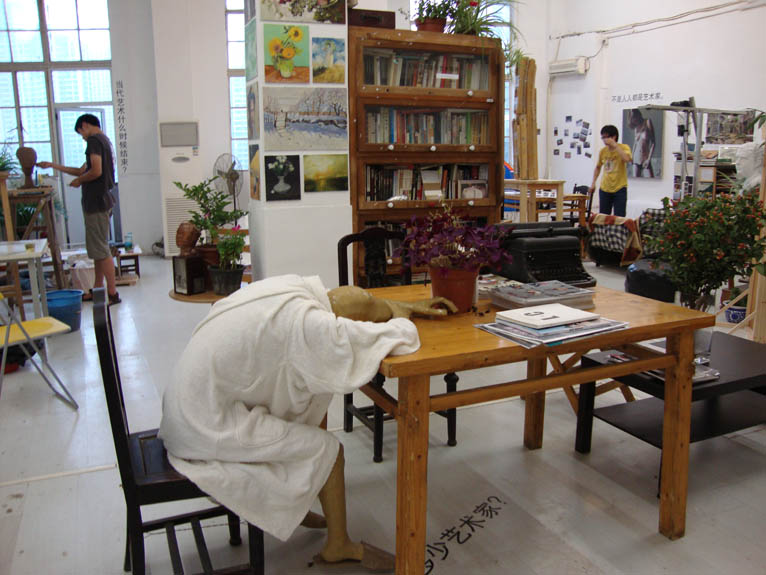AS WE TALK ABOUT ART, WHAT ARE WE TALKING ABOUT?
| August 1, 2010 | Post In LEAP 4

Initiating discussion on the abstract topic of the mechanisms of creation requires one to be both insouciant and courageous. Of course, neither insouciance nor courage are innate qualities. When artists, musicians, writers and other fellow unemployed get together, when this group of people appeal to the roaming notions and floating emotions of the creative process to establish a “meditative platform,” when they insist on invalidating the grammar of contemporary art and a “principle of no explanations,” such insouciance and courage emerge automatically. This is the metaphorical kiln wherein the “Museum of Unknown,” a container for the display of the “creative ecosystem,” is fired. Here, the “quality of experience” is extracted from the socialization of the individual, separated into different sensory nodes, and placed on an interactive field for exchange. In this way, the concept that one, artistic creation results from a post-partum return to nothingness, and two, that the power of action originates in the creator’s reflection on and bewilderment with his own existence, is emphasized. And nothing else.
The Museum of Unknown is a long-term art project. The first installment included Qiu Anxiong, Hu Bingqing, Li Shaohua, Liao Fei, Ou Jiayuan, Wu Ding, Zheng Huan, Zhou Ming, and Mian Mian, among others. This installment’s “meditative platform” is the first demonstration of the Museum of Unknown, taking “When we talk about art, what do we talk about?” as its theme. Even if we closely follow and pore through this exhibition in the spirit of this theme, it’s very possible that the whole thing ends up as one giant paradox. However, the perambulations of diversity and inquiry contained in the very ecosystem of the exhibition allow visitors to feel a sort of extension of possibility, thereby promoting the construction of ambiguous relations on the border between the known and the unknown and making the individual progressive tense something to ponder.
Everything on the “meditative platform” is as yet undefined. Here, you can see a compendium of various elements: paintings, posters, photographs, sketches, and text on the walls; furniture, sculpture, flowers, plants, books, and all other sorts of equipment placed in the middle of the space; and people who seem to be in creative or otherwise ruminative states. Are these things art? Are these people artists? There’s really no way of telling. Everything leaves your perception of the space blurry and disordered. It could be a studio, a bar, an exhibition, or a “borderland” where people can get together and chat. You may blend in with the surroundings, or play the role of visiting outsider. In short, in terms of how to savor, filter, and define that which pertains to you, both form and spirit appear loose, disconnected. Here, what’s most important is that things happen, not where they are headed.
What the “meditative platform” aims to capture are those ideas that form in our heads for no apparent reason. It wants us to discover what’s at the bottom of our hearts. At the beginning, perhaps artistic creation confronted the problems and questions of the creator. Later it was the perception of the individual as member of society—the typical restrictions of the individual, or the influence of one’s surroundings, meta-topics of the age, and so on, everything that critics tend to get off on—until it had nothing to do with the motivating forces behind artistic creation. In the Museum of Unknown, everything seems to despise art in the name of making a fuss, and we don’t need critics to offer some revelatory explanation. Here, the grammar of contemporary art doesn’t lose any of its efficacy. Rather, it becomes an open and undefined place for the undefined to roam. Still, I believe that the Museum of Unknown, under these seemingly disconnected circumstances, previews and hints at a kind of causal existence: that everything produced in the hands of creativity is definitively not just some psychic orgasm from out of nowhere. Yin Yan

